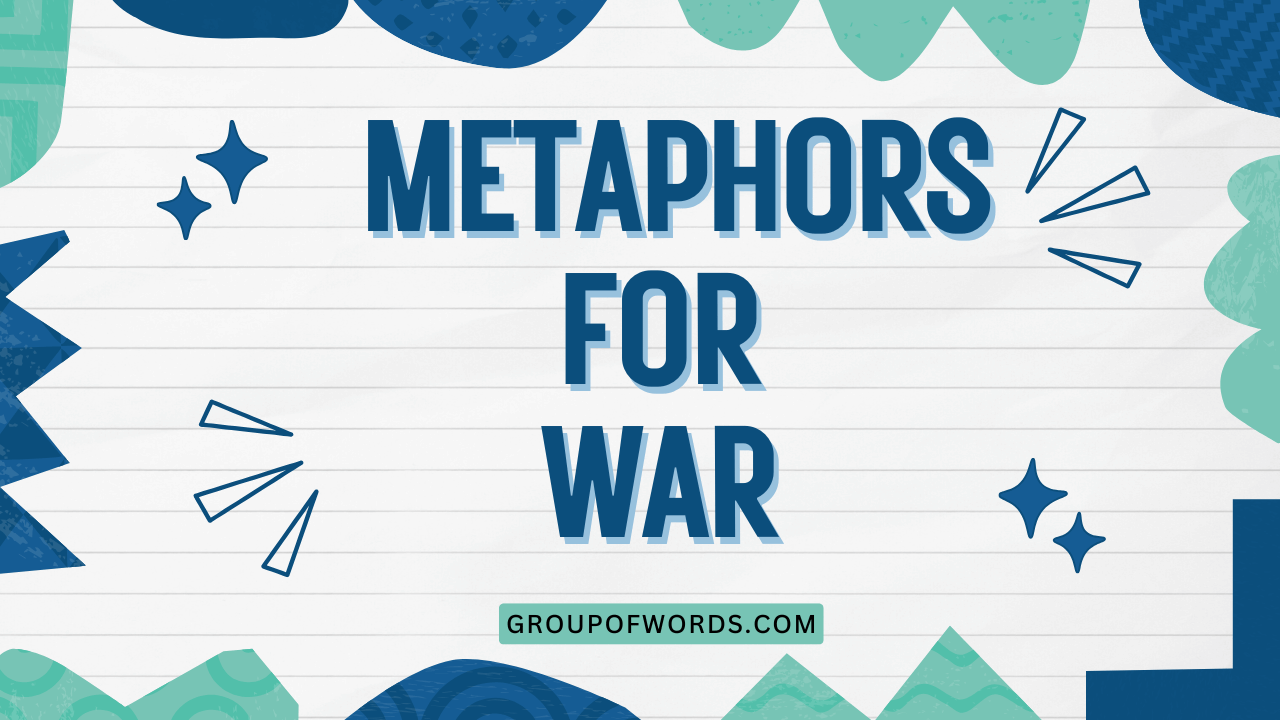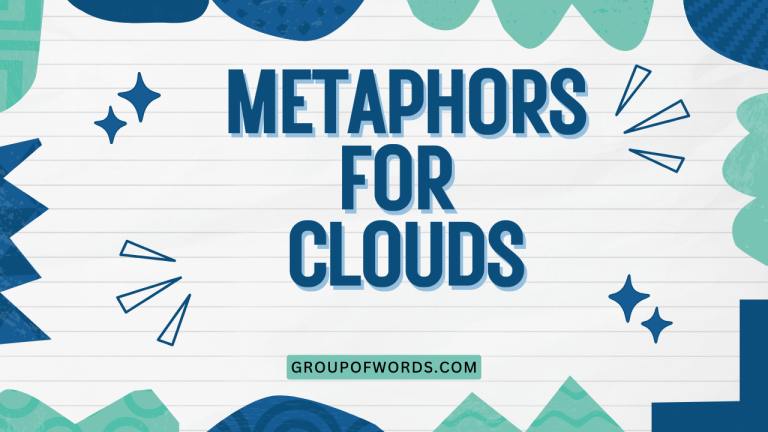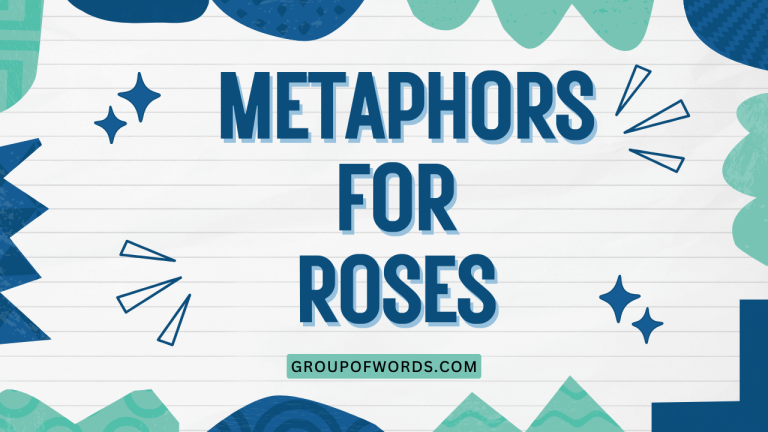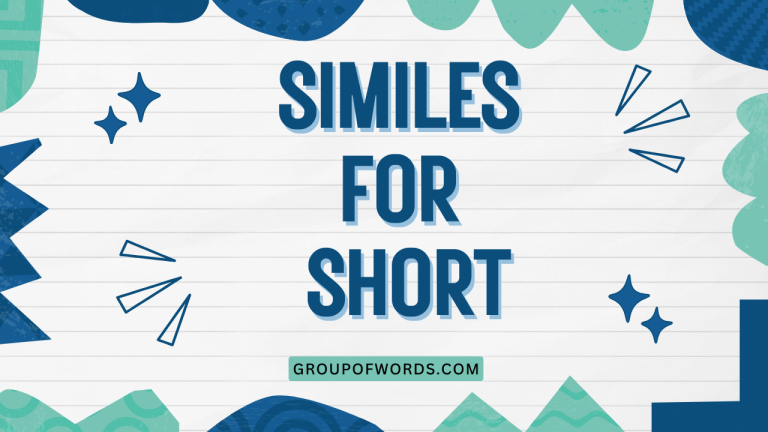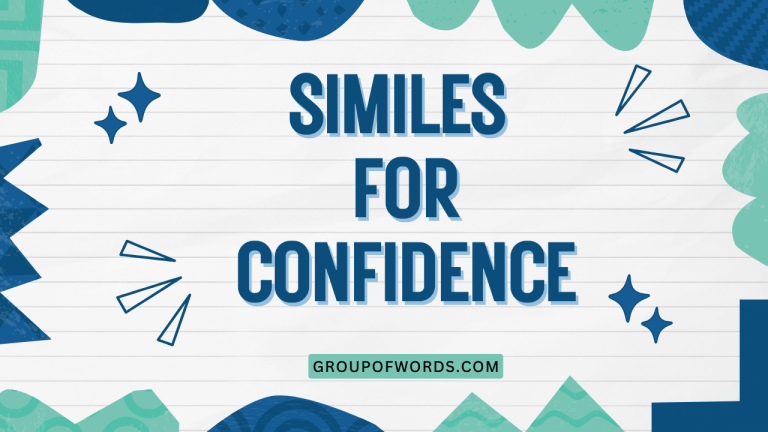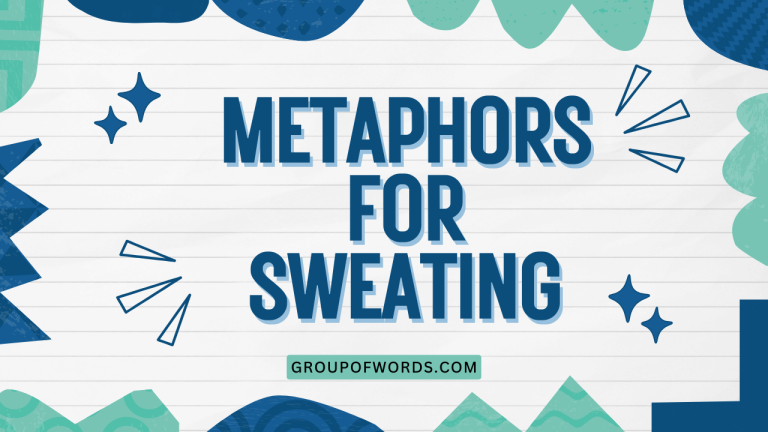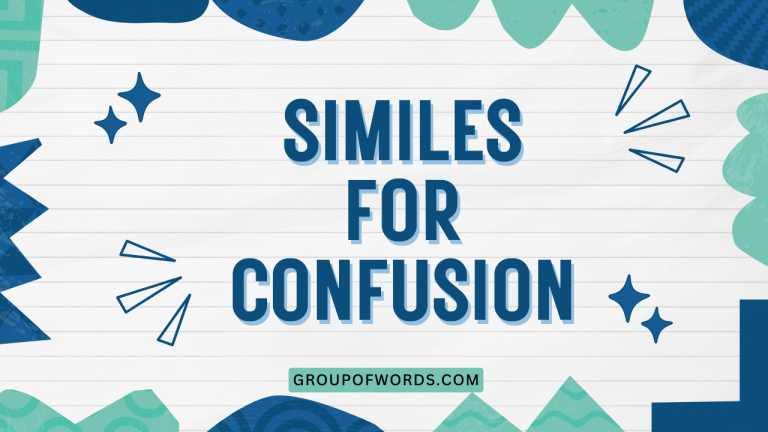War as Words: Understanding Metaphors for Conflict
Metaphors are powerful tools that shape our understanding of the world, and nowhere is this more evident than in how we talk about war. Far from being mere stylistic flourishes, metaphors used to describe conflict profoundly influence our perceptions, emotions, and even our policies.
This article delves into the rich tapestry of metaphors used for war, exploring their structure, types, and impact. Understanding these linguistic devices is crucial for anyone seeking a deeper comprehension of not only language but also the complex realities of war and peace.
This guide is designed for English language learners, students of rhetoric, and anyone interested in the intersection of language and conflict, providing a comprehensive overview with examples and exercises to enhance your understanding.
Table of Contents
- Introduction
- Definition of Metaphor and Its Role in Describing War
- Structural Breakdown of War Metaphors
- Types and Categories of War Metaphors
- Examples of War Metaphors
- Usage Rules and Considerations
- Common Mistakes When Using War Metaphors
- Practice Exercises
- Advanced Topics: The Rhetoric of War Metaphors
- Frequently Asked Questions
- Conclusion
Definition of Metaphor and Its Role in Describing War
A metaphor is a figure of speech that directly compares two unrelated things, asserting that one thing is another. This comparison isn’t literal; instead, it highlights shared characteristics or associations, creating a richer and more evocative understanding. Metaphors function by transferring qualities from one concept (the source domain) to another (the target domain). For example, saying “He is a lion in battle” doesn’t mean he’s literally a lion, but that he possesses lion-like qualities such as courage and ferocity.
In the context of war, metaphors play a crucial role. War, by its very nature, is a complex and often abstract phenomenon.
It involves large-scale violence, political maneuvering, and profound human suffering. Metaphors help us make sense of this complexity by framing war in terms we can more easily grasp.
By comparing war to something familiar, like a game, a disease, or a natural disaster, we can simplify its intricacies and evoke specific emotional responses. These emotional responses can then influence public opinion, policy decisions, and even the conduct of war itself.
Therefore, understanding the metaphors used to describe war is essential for critically analyzing discourse surrounding conflict.
Structural Breakdown of War Metaphors
The structure of a war metaphor typically involves two key elements: the source domain and the target domain. The source domain is the concept or idea that is used to describe or explain the target domain, which in this case is war. The effectiveness of a metaphor depends on the degree of overlap between the characteristics of the source and target domains. Let’s break this down further:
- Source Domain: This is the familiar concept used to explain war. Examples include games, diseases, natural disasters, and business ventures.
- Target Domain: This is the war itself. It is the subject being described and understood through the lens of the source domain.
- Mapping: This is the process of transferring characteristics from the source domain to the target domain. For instance, if war is described as a game, then concepts like “strategy,” “winning,” and “losing” are mapped onto the war.
The power of a war metaphor lies in its ability to shape our understanding of the conflict. Consider the metaphor “War is a disease.” In this case, the source domain (disease) brings with it connotations of contagion, infection, and the need for eradication.
This can lead to viewing the enemy as something to be eliminated at all costs. The choice of metaphor, therefore, has significant implications for how we perceive and react to war.
Types and Categories of War Metaphors
War metaphors can be categorized based on the source domain they draw upon. Here are some common types:
War as a Game or Sport
This metaphor frames war as a strategic competition with winners and losers. Key elements include strategies, tactics, maneuvers, and the pursuit of victory.
This metaphor often downplays the human cost of war, focusing instead on the intellectual challenge and the thrill of competition. It emphasizes planning, risk assessment, and the importance of outmaneuvering the opponent.
War as a Disease or Illness
This metaphor portrays war as a pathological condition that infects society. It emphasizes the destructive and contagious nature of conflict.
Key elements include infection, contagion, treatment, and cure. This metaphor can lead to viewing the enemy as a source of contamination that must be eradicated to restore health to the body politic.
War as a Natural Disaster
This metaphor depicts war as an uncontrollable force of nature, like a hurricane or earthquake. It emphasizes the destructive power and unpredictable nature of conflict, often implying a sense of inevitability.
Key elements include destruction, chaos, devastation, and the idea of being at the mercy of powerful forces. This metaphor can lead to a sense of helplessness and resignation.
War as a Business or Economic Activity
This metaphor frames war as an investment with potential returns. It emphasizes the costs and benefits of conflict, often focusing on economic gains and resource acquisition.
Key elements include profit, loss, investment, and competition. This metaphor can lead to a cold and calculating view of war, prioritizing strategic advantages over human considerations.
War as a Fight or Struggle
This is a fundamental and often direct metaphor, portraying war as a physical confrontation between opposing forces. It emphasizes the direct clash of arms, the struggle for dominance, and the importance of strength and resilience.
Key elements include combat, aggression, defense, and survival. This metaphor highlights the visceral and brutal aspects of war.
Examples of War Metaphors
To illustrate the different types of war metaphors, here are several examples categorized by their source domain:
War as a Game Examples
This table provides examples of how war is presented as a game, emphasizing strategy and competition. Notice how these metaphors often downplay the human cost, focusing instead on the intellectual challenge of outmaneuvering the opponent.
| Metaphor | Explanation |
|---|---|
| “The war is a chess match.” | Implies a strategic game with calculated moves and counter-moves. |
| “We need to play our cards right.” | Suggests war involves elements of chance and skillful decision-making. |
| “They made a strategic blunder.” | Frames a military error as a mistake in a game. |
| “The battle was a tactical victory.” | Presents the battle as a strategic achievement. |
| “We need to think several moves ahead.” | Emphasizes the importance of long-term planning in war. |
| “They were caught off guard by our gambit.” | Uses a chess term to describe a surprising military move. |
| “This is a high-stakes game.” | Highlights the risks and potential rewards of war. |
| “We need to checkmate the enemy.” | Uses a chess term to describe the ultimate goal of defeating the enemy. |
| “The war is a long game.” | Suggests the conflict will be protracted and require patience. |
| “They are playing a dangerous game.” | Implies the enemy’s actions are risky and could have severe consequences. |
| “It’s time to level the playing field.” | Suggests creating a fair or equal opportunity for success, often through intervention. |
| “We have to stay one step ahead.” | Emphasizes the need to anticipate and outsmart the enemy. |
| “Their strategy was a losing hand.” | Illustrates how a plan doomed to fail resembles a poor hand of cards. |
| “The invasion was a power play.” | Highlights the strategic maneuvering for dominance. |
| “We need to call their bluff.” | Suggests challenging an opponent’s deceptive or exaggerated claims. |
| “Their move was checkmate.” | Indicates a decisive and irreversible victory. |
| “The situation is a stalemate.” | Illustrates a deadlock where neither side can gain an advantage. |
| “They are playing with fire.” | Emphasizes the dangerous and potentially disastrous consequences of their actions. |
| “The war became a game of cat and mouse.” | Suggests a strategic pursuit and evasion between opposing forces. |
| “We need to up the ante.” | Means to increase the stakes or commitment in a conflict or negotiation. |
| “They need to reshuffle their strategy.” | Suggests a need to rethink and reorganize their approach to the conflict. |
| “The war is a test of wills.” | Highlights the psychological aspect of the conflict, comparing it to a mental game. |
| “Every battle is a calculated risk.” | Emphasizes the strategic and deliberate nature of military decisions. |
| “We must avoid falling into their trap.” | Suggests the enemy is setting a strategic snare. |
War as a Disease Examples
This table presents examples of war being likened to a disease, highlighting its destructive and contagious nature. These metaphors often frame the enemy as a source of contamination that must be eradicated.
| Metaphor | Explanation |
|---|---|
| “War is a cancer on society.” | Implies a destructive and spreading force that threatens the health of society. |
| “We need to eradicate this evil.” | Frames the enemy as a disease that must be completely eliminated. |
| “The insurgency is a spreading infection.” | Suggests the conflict is growing and becoming more difficult to contain. |
| “We must quarantine the affected areas.” | Implies isolating regions to prevent the spread of conflict. |
| “The war has poisoned relations between the countries.” | Portrays the war as a toxic substance that has damaged relationships. |
| “Peace talks are the only cure.” | Frames diplomacy as a way to heal the wounds of war. |
| “The country is suffering from war fatigue.” | Suggests the population is exhausted and weakened by the conflict. |
| “The war has left deep scars on the nation.” | Implies lasting psychological and physical damage. |
| “We need to treat the wounds of war.” | Frames post-conflict recovery as a process of healing. |
| “The conflict is a symptom of deeper problems.” | Suggests the war is an outward manifestation of underlying issues. |
| “The propaganda is a virus, infecting minds.” | Illustrates how manipulation is seen as a contagious and harmful influence. |
| “Corruption is a festering wound.” | Emphasizes how corruption deteriorates and damages society. |
| “Hate is a contagious disease.” | Highlights the spreading and harmful nature of hatred. |
| “The war has left the economy in critical condition.” | Presents the economy as ailing and in need of urgent care. |
| “The political climate is toxic.” | Implies a harmful and poisonous environment. |
| “Their ideology is a malignant growth.” | Frames the enemy’s beliefs as a dangerous and expanding threat. |
| “We must inoculate the population against extremism.” | Suggests protecting people from harmful ideologies through education and resilience. |
| “The country is in remission from the conflict.” | Implies a temporary reduction in the intensity of the war. |
| “The conflict is a chronic condition.” | Suggests the war is persistent and long-lasting. |
| “We need to perform surgery on the corrupt system.” | Frames reform as a painful but necessary intervention. |
| “The war is a plague on the land.” | Illustrates the devastation and widespread suffering caused by the conflict. |
| “Their hate speech is spreading like wildfire.” | Highlights the rapid and destructive impact of hateful rhetoric. |
| “We need to build up the nation’s immunity.” | Suggests strengthening defenses and resilience against future conflicts. |
| “The war has become a festering sore.” | Emphasizes the painful and unresolved nature of the conflict. |
War as a Natural Disaster Examples
The following table provides examples of war described as a natural disaster, emphasizing its destructive power and uncontrollable nature. This metaphor often creates a sense of inevitability and helplessness.
| Metaphor | Explanation |
|---|---|
| “The war is a tsunami of destruction.” | Implies overwhelming and devastating force. |
| “The conflict erupted like a volcano.” | Suggests a sudden and violent outburst. |
| “The invasion was a hurricane of chaos.” | Portrays the invasion as a destructive and disorganized event. |
| “The war swept through the country like a wildfire.” | Suggests rapid and uncontrollable spread of destruction. |
| “The city was leveled by the storm of war.” | Implies complete devastation and destruction. |
| “The refugees were fleeing the flood of violence.” | Frames violence as an overwhelming and inescapable force. |
| “The country is buried under the rubble of war.” | Suggests widespread destruction and devastation. |
| “The aftershocks of the conflict are still being felt.” | Implies ongoing consequences and instability. |
| “The war left a barren landscape.” | Portrays the aftermath of war as desolate and lifeless. |
| “The country is struggling to rebuild after the earthquake of war.” | Frames reconstruction as a difficult and arduous process. |
| “The attack was a bolt from the blue.” | Suggests a sudden and unexpected event. |
| “The country was caught in the crossfire.” | Implies being trapped in a dangerous and uncontrollable situation. |
| “The war unleashed a torrent of violence.” | Highlights the overwhelming and destructive force of the conflict. |
| “The conflict is a raging inferno.” | Frames the war as an intense and uncontrollable fire. |
| “They were swallowed by the abyss of war.” | Implies being consumed by the destructive forces of the conflict. |
| “The country is drowning in debt after the war.” | Portrays the economic burden of war as overwhelming. |
| “The peace process is a fragile seedling.” | Suggests the peace is delicate and vulnerable. |
| “The war created a dust bowl of despair.” | Implies widespread poverty and hopelessness. |
| “The conflict is a tempest in a teapot.” | Suggests the war is an overblown and insignificant event (often used sarcastically). |
| “The country is weathering the storm.” | Implies enduring a difficult and challenging period. |
| “The disaster of war has devastated the economy.” | Links the economic destruction directly to the cataclysmic event. |
| “The war’s impact is like a spreading drought.” | Highlights the long-term and pervasive effects of the conflict. |
| “It was an avalanche of bad news.” | Illustrates the overwhelming and unstoppable flow of negative information. |
| “They are walking through a minefield of political issues.” | Suggests navigating a dangerous and complex situation. |
War as a Business Examples
This table illustrates how war is sometimes viewed as a business or economic activity, emphasizing costs, benefits, and strategic investments. This metaphor can lead to a more detached and calculating view of conflict.
| Metaphor | Explanation |
|---|---|
| “War is a lucrative business.” | Implies that some individuals or groups profit from conflict. |
| “We need to invest in defense.” | Frames military spending as a strategic investment. |
| “The war is costing us too much.” | Highlights the economic burden of the conflict. |
| “We need to cut our losses and withdraw.” | Frames withdrawal as a way to minimize financial damage. |
| “The country is bankrupting itself with this war.” | Suggests the war is draining the nation’s resources. |
| “The war is a strategic asset.” | Frames the conflict as something that provides a competitive advantage. |
| “We need to corner the market on arms.” | Implies dominating the arms trade for economic and strategic gain. |
| “The war is a hostile takeover.” | Frames the conflict as an attempt to seize control of territory or resources. |
| “The country is selling its soul for the war effort.” | Suggests sacrificing moral values for strategic gains. |
| “The war is a bad investment.” | Implies the conflict is not yielding the expected returns. |
| “We need to maximize our gains.” | Highlights the pursuit of strategic and economic advantages. |
| “The war is a gamble.” | Suggests the outcome is uncertain and dependent on chance. |
| “They are trying to monopolize power.” | Illustrates an attempt to control all aspects of governance and influence. |
| “The conflict is driven by market forces.” | Suggests economic factors are the primary drivers of the war. |
| “They are trying to liquidate their assets.” | Implies selling off resources to fund the war effort. |
| “The economy is in recession due to the war.” | Links the economic downturn directly to the conflict. |
| “We need to diversify our alliances.” | Suggests spreading the risk by forming multiple partnerships. |
| “Their strategy is a high-risk venture.” | Frames the enemy’s plan as dangerous and potentially disastrous. |
| “The war is a zero-sum game.” | Implies that one side’s gain is necessarily the other side’s loss. |
| “We need to capitalize on their weakness.” | Highlights the pursuit of opportunities to exploit the enemy. |
| “The war is creating a bubble in the economy.” | Suggests an unsustainable and potentially unstable economic situation. |
| “They are trying to undercut our position.” | Implies undermining the country’s strategic advantage. |
| “The war is a drain on our resources.” | Emphasizes the financial burden of the conflict. |
| “We need to balance the books.” | Suggests managing the financial costs of the war. |
War as a Fight Examples
This table displays examples of war portrayed as a basic fight or struggle, emphasizing direct combat and the struggle for survival. This metaphor highlights the visceral and brutal aspects of conflict.
| Metaphor | Explanation |
|---|---|
| “The war is a brutal fight for survival.” | Implies a desperate struggle against overwhelming odds. |
| “We must stand our ground and defend our homeland.” | Frames the war as a defensive struggle. |
| “The enemy is relentless in their attacks.” | Suggests the enemy is persistent and aggressive. |
| “We need to push back against their aggression.” | Frames the war as a response to enemy attacks. |
| “The battle was a bloody slugfest.” | Implies a violent and protracted confrontation. |
| “We must fight tooth and nail to win.” | Suggests a desperate and determined struggle. |
| “The enemy is trying to crush our resistance.” | Frames the war as an attempt to suppress opposition. |
| “We will not back down.” | Implies a firm commitment to continue fighting. |
| “The war is a test of strength and endurance.” | Frames the conflict as a challenge to physical and mental resilience. |
| “We must overcome their superior forces.” | Suggests a struggle against a more powerful enemy. |
| “Every day is a battle.” | Highlights the constant struggle and challenges faced during wartime. |
| “We are locked in a struggle for power.” | Implies a continuous and intense competition for dominance. |
| “They are trying to bully us into submission.” | Frames the enemy’s actions as aggressive intimidation. |
| “We will not yield to their demands.” | Implies a firm refusal to compromise. |
| “The war is a constant grind.” | Suggests a relentless and exhausting struggle. |
| “We are fighting for our freedom.” | Frames the war as a struggle for liberation and self-determination. |
| “The enemy is trying to break our spirit.” | Implies an attempt to demoralize and weaken the population. |
| “We will resist them at every turn.” | Suggests a continuous and unwavering opposition. |
| “The war is a brutal clash of civilizations.” | Frames the conflict as a fundamental struggle between different cultures. |
| “We must stand united against the enemy.” | Implies the importance of solidarity and cooperation. |
| “The war has become a war of attrition.” | Suggests a prolonged and exhausting struggle to wear down the enemy. |
| “Every soldier is a warrior.” | Elevates the role of the individual fighter in the conflict. |
| “We are in a battle for hearts and minds.” | Highlights the importance of winning public support. |
| “The enemy is a formidable opponent.” | Implies a challenging and dangerous adversary. |
Usage Rules and Considerations
Using war metaphors effectively requires careful consideration of context and audience. Here are some key rules and guidelines:
- Be aware of the connotations: Each metaphor carries its own set of associations and emotional baggage. Choose metaphors that evoke the desired response.
- Avoid clichés: Overused metaphors can lose their impact and sound trite. Strive for originality and freshness.
- Maintain consistency: Avoid mixing metaphors that create contradictory or confusing images.
- Consider the ethical implications: Be mindful of how your choice of metaphor might dehumanize the enemy or downplay the suffering of war.
- Know your audience: Tailor your metaphors to the knowledge and understanding of your audience.
For example, using “war is a game” might be appropriate in a strategic analysis but highly insensitive in a discussion of civilian casualties. Similarly, using “war is a natural disaster” might be seen as absolving human responsibility for the conflict.
The most effective war metaphors are those that are both vivid and ethically responsible.
Common Mistakes When Using War Metaphors
Several common mistakes can undermine the effectiveness and appropriateness of war metaphors:
| Mistake | Incorrect Example | Correct Example | Explanation |
|---|---|---|---|
| Mixing Metaphors | “The war is a chess game that’s also a spreading virus.” | “The war is a chess game with calculated moves.” or “The war is a spreading virus that threatens society.” | Combining unrelated metaphors creates a confusing image. |
| Using Clichés | “The war is a necessary evil.” | “The war is a brutal struggle for survival.” | Clichés lack impact and originality. |
| Dehumanizing Language | “We need to exterminate the enemy.” | “We need to defeat the enemy.” | Dehumanizing language can promote violence and hatred. |
| Downplaying Suffering | “The war is just a minor setback.” | “The war has caused immense suffering and loss.” | Minimizing the human cost of war is insensitive and disrespectful. |
| Inappropriate Tone | “The war is a fun adventure.” | “The war is a serious and tragic event.” | The tone should reflect the gravity of the situation. |
| Overuse of Metaphors | “The war is a game, a disease, a business, and a disaster all rolled into one.” | “The war is a complex and multifaceted conflict.” | Excessive metaphors can become overwhelming and confusing. |
| Ignoring Context | Using “war is a game” when discussing civilian casualties. | Using “war is a tragedy” when discussing civilian casualties. | The metaphor should be appropriate for the specific context. |
Practice Exercises
These exercises will help you practice identifying, creating, and analyzing war metaphors.
Exercise 1: Identifying War Metaphors
Identify the war metaphor in each sentence and explain its meaning.
| Question | Answer |
|---|---|
| 1. The peace talks are a fragile bridge. | Metaphor: “Peace talks are a fragile bridge.” Meaning: The peace talks are unstable and could easily collapse. |
| 2. The country is drowning in debt after the war. | Metaphor: “Drowning in debt.” Meaning: The country is overwhelmed by financial obligations. |
| 3. The propaganda was a virus infecting the minds of the youth. | Metaphor: “Propaganda was a virus.” Meaning: The propaganda is harmful and spreading rapidly. |
| 4. The general orchestrated a strategic chess move. | Metaphor: “Chess move.” Meaning: The general planned a strategic maneuver. |
| 5. The rebels are a cancer on the country’s development. | Metaphor: “Cancer on the country’s development.” Meaning: The rebels are a destructive force hindering progress. |
| 6. The economic crisis was a storm they had to weather. | Metaphor: “Economic crisis was a storm.” Meaning: The crisis was a turbulent and difficult period. |
| 7. The conflict erupted like a volcano. | Metaphor: “Conflict erupted like a volcano.” Meaning: The conflict started suddenly and violently. |
| 8. The company was caught in the crossfire between the two nations. | Metaphor: “Caught in the crossfire.” Meaning: The company was unintentionally harmed by the conflict. |
| 9. The election became a battlefield of ideologies. | Metaphor: “Election became a battlefield.” Meaning: The election was a fierce competition of ideas. |
| 10. The negotiations were a minefield of potential disagreements. | Metaphor: “Negotiations were a minefield.” Meaning: The negotiations were full of hidden dangers and risks. |
Exercise 2: Creating War Metaphors
Create a war metaphor for each of the following concepts:
| Concept | Example Metaphor |
|---|---|
| 1. Ceasefire | A fragile truce. |
| 2. Military strategy | A carefully constructed blueprint. |
| 3. Civilian casualties | Collateral damage. |
| 4. Peacekeepers | Gardeners tending a delicate peace. |
| 5. War profiteers | Vultures feeding on the dead. |
| 6. Propaganda | A smoke screen designed to deceive. |
| 7. Resistance movement | A flicker of hope in the darkness. |
| 8. Post-war reconstruction | Rebuilding a shattered foundation. |
| 9. Diplomatic sanctions | Economic sieges. |
| 10. Arms race | A dangerous spiral upward. |
Exercise 3: Analyzing the Impact of War Metaphors
Analyze the impact of the following war metaphors. How do they shape our understanding of the conflict?
| Metaphor | Analysis |
|---|---|
| 1. War is a necessary evil. | This metaphor suggests that war is undesirable but sometimes unavoidable, implying a pragmatic acceptance of violence. It can normalize conflict and downplay its moral implications. |
| 2. The enemy is a snake in the grass. | This metaphor portrays the enemy as treacherous and deceitful, evoking feelings of distrust and suspicion. It can justify preemptive action and dehumanize the opponent. |
| 3. Peace is a delicate flower. | This metaphor suggests that peace is fragile and requires careful nurturing. It emphasizes the need for diplomacy and compromise. |
| 4. The war is a marathon, not a sprint. | This metaphor implies the war is a long and enduring struggle, requiring perseverance and strategic endurance. It prepares people for a protracted conflict. |
| 5. The economy is a casualty of war. | This metaphor highlights the economic devastation caused by the conflict, emphasizing the financial costs and long-term consequences. |
| 6. The refugees are adrift at sea. | This metaphor portrays refugees as helpless and vulnerable, evoking feelings of compassion and urging humanitarian assistance. |
| 7. Victory is within our grasp. | This metaphor creates a sense of optimism and encourages continued effort, even in the face of adversity. |
| 8. The war is a bottomless pit. | This metaphor suggests the war is consuming resources without end, leading to despair and a desire to withdraw. |
| 9. Truth is the first casualty of war. | This metaphor highlights the manipulation and distortion of information during conflict, warning against blind faith in official narratives. |
| 10. The seeds of future conflict are being sown. | This metaphor suggests that current actions could lead to renewed conflict in the future, urging caution and long-term planning. |
Advanced Topics: The Rhetoric of War Metaphors
At a more advanced level, the study of war metaphors intersects with the field of rhetoric. Rhetoric is the art of persuasive communication, and war metaphors are powerful rhetorical devices.
They can be used to frame arguments, influence public opinion, and justify political actions.
Analyzing the rhetoric of war metaphors involves considering the following:
- The speaker: Who is using the metaphor, and what is their agenda?
- The audience: Who is the intended audience, and what are their existing beliefs and values?
- The context: What is the historical and political context in which the metaphor is being used?
- The effect: What is the intended effect of the metaphor on the audience?
By critically examining these factors, we can gain a deeper understanding of how war metaphors are used to shape perceptions, manipulate emotions, and mobilize support for or against conflict. Understanding the rhetorical function of war metaphors is crucial for media literacy and critical thinking.
Frequently Asked Questions
Here are some frequently asked questions about war metaphors:
- What is the difference between a metaphor and a simile?
Both metaphors and similes are figures of speech that compare two things. However, a metaphor states that one thing is another, while a simile uses “like” or “as” to make the comparison. For example, “War is hell” (metaphor) vs. “War is like hell” (simile).
- Why are metaphors so powerful in shaping our understanding of war?
Metaphors simplify complex concepts by framing them in terms we already understand. They also evoke emotional responses and can influence our perceptions and attitudes toward war.
- Can war metaphors be dangerous?
Yes, war metaphors can be dangerous if they dehumanize the enemy, down
play the suffering of war, or promote a simplistic view of conflict. They can also be used to manipulate public opinion and justify violence.
- How can I become more aware of the war metaphors being used around me?
Pay attention to the language used in news reports, political speeches, and everyday conversations. Ask yourself what comparisons are being made and what implications they have.
- Are there any “good” war metaphors?
A “good” war metaphor is one that is accurate, ethically responsible, and promotes understanding rather than prejudice. Metaphors that emphasize the human cost of war or the need for diplomacy can be considered more constructive.
Conclusion
War metaphors are more than just figures of speech; they are powerful tools that shape our understanding of conflict. By framing war in terms of familiar concepts, metaphors can simplify its complexities, evoke emotional responses, and influence our perceptions and attitudes.
However, they can also be dangerous if they dehumanize the enemy, downplay suffering, or promote simplistic views of conflict. Therefore, it is crucial to be aware of the metaphors being used around us and to critically analyze their implications.
By understanding the rhetoric of war metaphors, we can become more informed and engaged citizens, better equipped to navigate the complex realities of war and peace. The ability to dissect and understand these metaphors is a key skill in media literacy and critical thinking, enabling a more nuanced and responsible engagement with discussions surrounding conflict.
